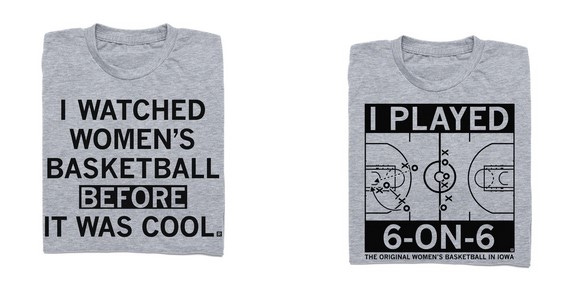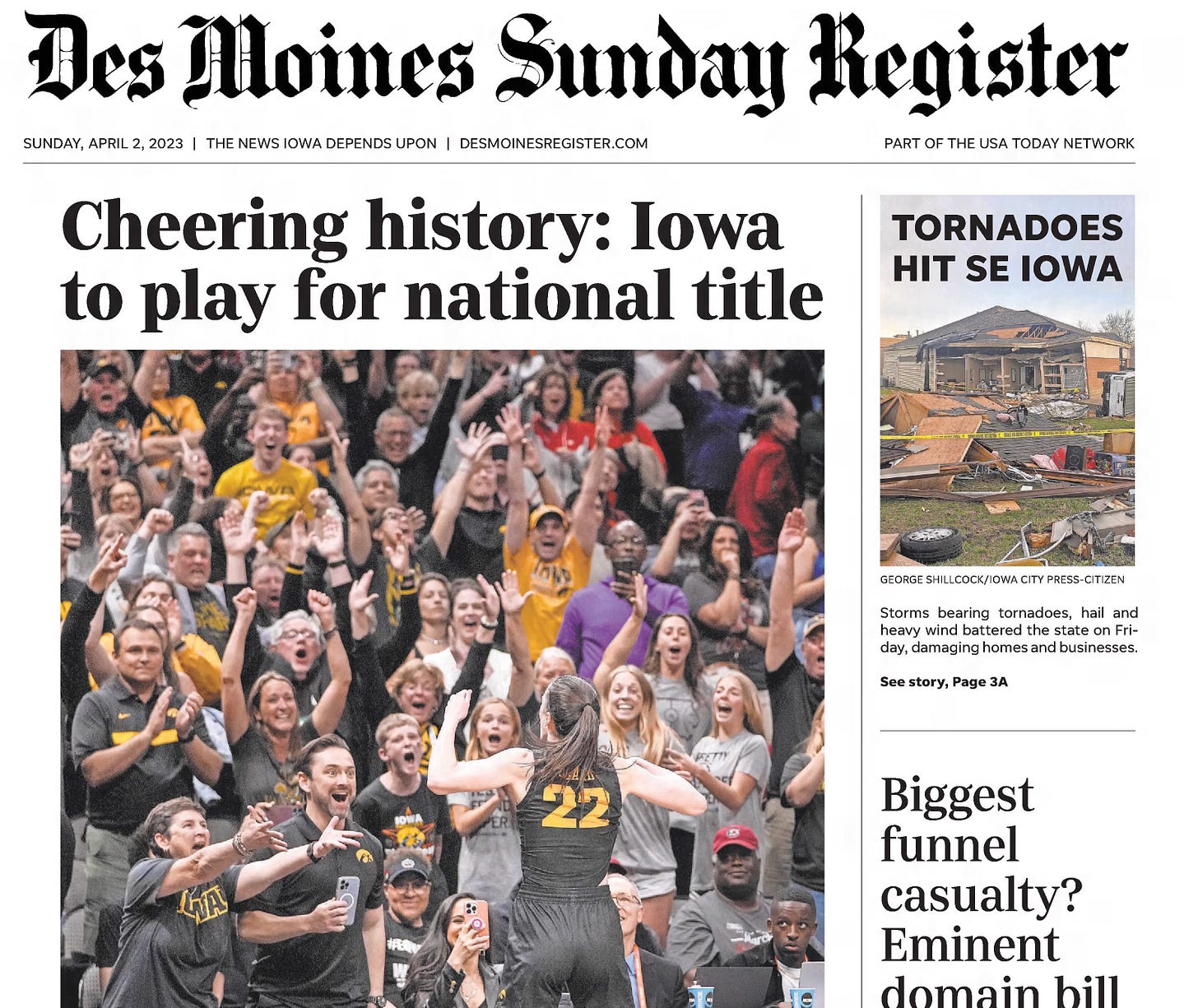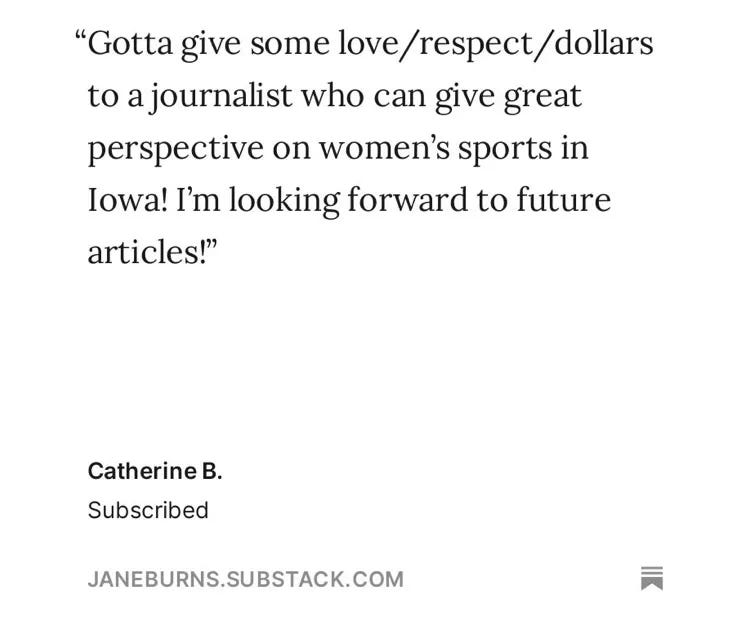‘They feel seen and they feel validated’
For a generation of women, this moment for Caitlin Clark and the Hawkeyes is their moment too

When Kathy Bresnahan attended a Title IX celebration at the University of Iowa last year, various Hawkeye women’s teams and athletes were there too. But it was one athlete in particular who made the biggest impression on the crowd.
Basketball star Caitlin Clark was rushed by those in attendance, who wanted to pose for photos or just meet her.
“She was swarmed the whole night,” said Bresnahan, the former Iowa City West volleyball coach and author of The Miracle Season. “I thought, ‘Oh come on you guys, stop it.’ It was like they were around Taylor Swift.”
These weren’t the little girls for whom Clark is Taylor Swift in gym shorts, they were women in their 60s and 70s. So maybe it was more like they were seeing a Beatle or Donny Osmond than Taylor Swift, but the thrill was much the same.
A lot of attention – rightly – has been paid to the young fan base that the Iowa star has cultivated everywhere she goes. But there’s another generation that Clark and her teammates have wowed – older women. Some of those women never got much of a chance to play sports, some played and understand the struggle it took to get to this point and some suddenly discovered there’s this cool thing called women’s basketball.
It's women like Bresnahan, 65, a longtime girls’ and women’s sports advocate who has been moved to tears to see the crowds at Carver-Hawkeye Arena and women’s basketball TV ratings that top the NBA’s. It’s women like longtime fan Mary Lou Gallagher, 67, of Des Moines, whose reaction after the Hawkeyes’ Final Four victory last year against South Carolina was captured in a photo that ran on the cover of the Des Moines Register and doesn’t look unlike Beatlemania photos from the 1960s.
It’s women like my friend Betsy, who had never seen a women’s basketball game in her life, even on TV, until last year and now wants just one thing for her 65th birthday next month – a Caitlin Clark #22 shirt. It’s women like my friend Christine, 65, who also had never seen a women’s basketball game til last season and now sometimes wants to watch alone because she’s too nervous to be around other people.
They’re everywhere at Carver-Hawkeye, white-haired and older women in black or gold shirts with 22 on the back, or maybe a Raygun shirt celebrating Kate Martin, Gabbie Marshall or declaring “I Played 6-on-6” or “I Watched Women’s Basketball Before It Was Cool.”

In some ways, all of this attention, all of this love for these women on the court, is their moment, too.
“I think it’s because we didn’t have anything,” said Bresnahan, who grew up in Wisconsin where her school didn’t begin offering basketball and volleyball for girls until she was a high school junior. “I’m shocked and awed when I watch Iowa women’s basketball. All the sellout crowds, they’re making these athletes legitimate.”
And it’s not just Iowa. Top-ranked South Carolina led the nation in attendance this season with 16,067 per home game. Sellouts dotted the national landscape, from the Pac-12 (God rest its soul) to the Ivy League. Attendance for the NCAA tournament’s first and second rounds set a record of 292,456 fans, up 60,779 from last year. Iowa’s second-round game on March 25 drew 4.9 million viewers on ESPN, 6.4 million at peak, making it the highest-rated women’s basketball ever that was not in a Final Four.
Nicole M. LaVoi, director of the Tucker Center for Research on Girls & Women’s Sport based at the University of Minnesota, says she understands just why this moment means so much to older women, particularly those who were in school before Title IX or played sports in the years shortly after.
“They’ve always been ardent sport fans but they’ve sort of remained invisible,” she said. “And now because it’s popular, they feel seen and they feel validated.”
Indeed, Gallagher describes her basketball fandom dating back to “before Iowa was famous.” She went to high school in Grinnell, which didn’t offer girls’ basketball until her senior year, but was a big sports fan anyway.
“It’s about time women got some recognition,” she said. “For so long we didn’t get anything.”
Not only did Gallagher go to the Final Four in Dallas last year, she scored tickets right down front because her son works at the arena where the games were held.
“I just sat down and I started crying,” she said. “I thought, ‘I can’t believe this.’ It was amazing.”
Marketers are beginning to take notice of this fan base, too, LaVoi said, even if it took them a while.
“For years and years, until the last year and a half, women as sport fans have been completely ignored because the target was always 18- to 34-year-old men,” she said. “Brands are finally getting savvy that they’ve been missing the boat on a whole demographic – like maybe half.”
LaVoi said that for so long, female sports fans and fans of women’s sports were so ignored by media and marketers that they just found their own way – through websites, blogs, streaming channels and niche or social media. They’ve made themselves known now, and the money is beginning to follow.
“[Brands] are starting to realize there’s money here and a return on their investment,” she said. “You’re starting to see a shift in the respect for the purchasing power of women in the marketplace.”
Bresnahan said she often reflects about the administrators who worked so hard in the 1960s and 1970s to pave the way for female athletes, particularly those at Iowa such as Christine Grant, Peggy Burke and Bonnie Slatton. She knows that what’s happening at Carver-Hawkeye Arena and beyond is their doing, whether people know it or not.
“It’s just such an amazing feeling to see this for the girls and the women,” Bresnahan said. “I don’t know if they realize what they have but all of us know what they have. I’m proud for them and I’m happy for them. It’s just an amazing transformation.”

Jane Burns is a former sports and features writer for the Des Moines Register, as well as other publications and websites. She’s a past winner of the Women’s Basketball Coaches Association’s Mel Greenberg Award for her coverage of women’s basketball. Over the course of her career she’s covered pretty much everything, which is why her as-yet-to-be-written memoir will be called “Cheese and Basketball: Stories From a Reporter Who Has Covered Everything.”
Iowa Writers’ Collaborative
I’m happy to join fellow Iowa writers and journalists as part of the Iowa Writers’ Collaborative. To receive a roundup of the week’s columns, subscribe to the Collaborative’s Sunday email.





On one hand, I felt differently when I was in high school at Southeast Polk, the girls' basketball team was revered because they had a winning record for many years. They were celebrities in the hallways. On the other hand, the media never paid any respect to SEP. We were just some country school. That was true of all our sports, not just the girls. SEP could not buy a mention on the TV news. Maybe that's why I was so comfortable at ISU. The Cyclones never got any attention then either. Thank goodness all of that has changed!